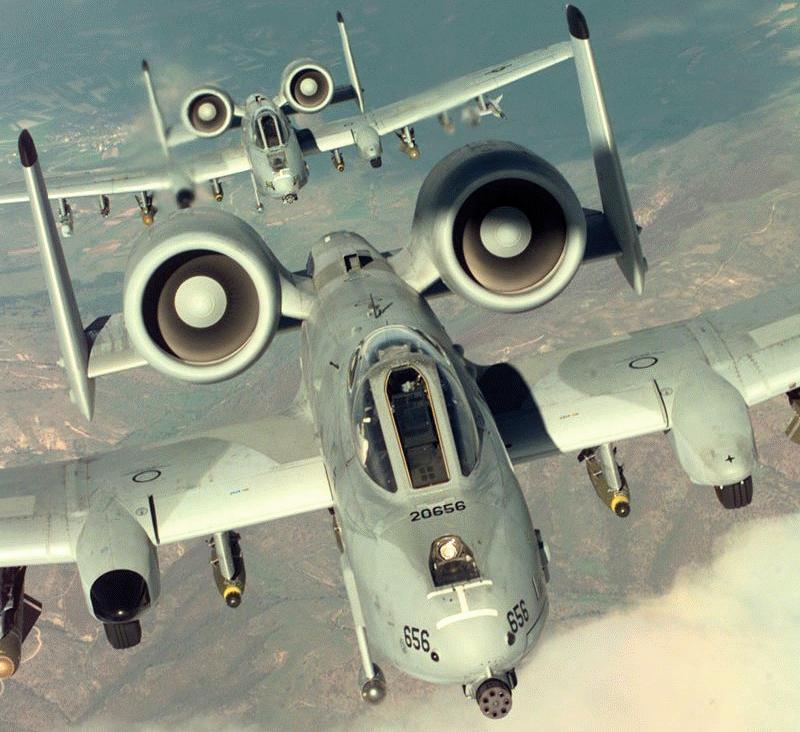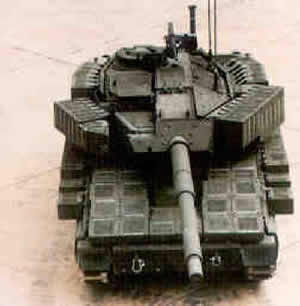
Merkava MK-4
Posted on 04/22/2011 9:04:11 PM PDT by sukhoi-30mki
New Designs Suit Tanks For Asymmetric War
Apr 22, 2011
By David Eshel, Bill Sweetman Tel Aviv, Washington
One trend in warfare and asymmetric combat (mostly urban) is the use of main battle tanks (MBTs) in small tactical assault forces. Tank versus tank fighting is virtually nonexistent. Even in high-intensity combat, tankers prefer firing at targets within visual range—2,000-3,000 meters (6,500-9,800 ft.). Longer-distance targets can be attacked with high-precision missiles directed by unmanned aerial vehicles (UAV) and laser designation.
Israel is among the countries adapting its MBTs, in this case the Merkava Mk4, for asymmetric combat. Evolving designs will enhance performance in a number of areas, notably firepower, protection, stealth and networked communications. Some tacticians tout the Mk4 as an infantry commander’s dream, for the versatility it can provide in battle when linked with other armored vehicles and dismounted troops.
In Europe, two contractors, Krauss-Maffei Wegmann (KMW) and Rheinmetall, are working on armor protection and weapon systems for MBTs and infantry fighting vehicles (IFVs), which not only enhance performance and situational awareness, but give crews more time to make decisions—a key advantage in low-intensity combat.
The trends underway in armored platform design could soon have an influence on battlefield tactics and, in the process, affect the development of a new generation of armored vehicles, including the U.S. Army’s Ground Combat Vehicle.
One area receiving attention is tank ammunition. Israel Aerospace Industries subsidiary MBT developed Lahat, a missile fired through the barrel of a tank, which eliminates expensive retrofit work. Using semi-active laser homing, Lahat can be designated by the firing tank or by an indirect designation, by another tank, UAV, helicopter or forward observers, so that the firing vehicle, using a hull-down position, is less exposed to counter-fire.
Lahat has a range of 8,000 meters when launched from a ground platform, and 13 km (8 mi.) when deployed from a high elevation. The missile’s accuracy is 0.7 meters circular error probable, and at an attack angle of more than 30 deg. penetrates 800 mm (31 in.) of steel armor.
Apart from longer range, higher precision and controlled lethality are guidelines for new munitions. Israel Military Industries’ APAM high-explosive, multipurpose M339 tank round provides one munition for a range of targets and scenarios, decreasing the need for different rounds. The fuse of the APAM is programmable after loading, giving the crew flexibility in targeting choice—antipersonnel, fortification, light armored vehicles, antitank.
Survivability of a tank and crew on a fire-saturated battlefield drove the Merkava’s design. A modular open-platform approach transformed the tank from a vehicle designed to fight other tanks into a versatile platform optimized for a changing battlefield. The Merkava shifts rapidly from low-intensity warfare to high-intensity counter-armor operations. It meets the rising antiarmor missile threat with active protection systems (APS). Mk4s are rolling off the assembly line with Rafael’s Trophy APS as a standard element of the protection suite. The Trophy APS was successfully combat-tested in March, when a Gazan fired a rocket-propelled grenade (RPG) at a tank. Elta System’s EL/M 2133 WindGuard sensors detected the projectile and in milliseconds classified the threat as severe and alerted the crew. The Trophy APS tracked the missile. When it was within range, the APS automatically activated the hard-kill countermeasure and destroyed the threat at a safe distance. Longer-distance threats—such as antitank guided missiles—would leave more time for other countermeasures.
The Merkava’s modular design permits changes at acceptable cost as operational requirements shift. Among changes envisioned by the IDF are those that address developments in ammunition, miniaturization of components, elevated observation needs in urban combat, advanced communications, APS radar, new camouflage materials, stealth technologies and enhanced life-support systems for crews.
As part of the evolution of the Merkava family, the MBT chassis is the basis for a family of heavily armored vehicles, designed for multimission operations in high- and low-intensity warfare. The first offshoot is the Namer IFV, which recently entered service and will deploy in large numbers.
Tactical and operational aspects of IDF tank deployment are being debated. Recent conflicts against hybrid opponents, such as Hezbollah, have forced the IDF to rethink the role of heavy forces in combat. The rapidly developing information technology domain presents a significant challenge for designers. The Mk4 is packed with sophisticated electronics, computers and network-centric connections. Rather than having specific processors committed to individual tasks, multiple processors in the Mk4 provide services to applications, each prioritized by parameters such as importance, urgency and process duration. The processors can be located in different areas of the tank and are connected by multiple networks, providing a resilient and survivable infrastructure.
In the past, tanks normally fought and survived within rigid formations. Today, they can operate in looser packs, seamlessly sharing targets, coordinating activities among themselves and cooperating with other elements over the IDF’s new digital C4I network. Each tank is designed as a network-centric system managed by dedicated servers for the turret and hull. It also has a digitally controlled power-distribution system for the turret and all weapon and observation systems. Crewmembers use common workstations, which connect to the tank’s intranet, for operations and to display data.
Enhanced and flexible firepower, ranging from a powerful 120-mm main gun, coaxial and remotely controlled machineguns and semi-automatic mortars, make the latest version of the Mk4 a flexible fighting machine. As the high-pressure gun will probably remain the main armament, extensive research will be invested in munitions technology to enhance the precision of long-range, direct-trajectory fire.
With its combination of firepower, mobility and protection, a Merkava/Namer team at the platoon level could in future operations present unprecedented flexibility for ground commanders. Although this capability has so far only been discussed, a four-vehicle platoon of two Merkava tanks and two Namer IFVs could make a well-balanced combat team, with the redundancy to split into two sub-units without degradation of firepower, especially in urban combat.
Rheinmetall and KMW, meanwhile, are collaborating on the Puma IFV, but disagree on some issues surrounding armor concepts, and in one case have found themselves in conflict. The problem arose with Rheinmetall’s Revolution tank upgrade package, installed as a demonstrator on a Leopard 2A4 tank. Since the Leopard is a KMW product, Rheinmetall is not allowed to refer to Revolution as a Leopard upgrade.
Nevertheless, the Revolution concept shows how technology has changed the tank in the past decade and made it far more relevant to today’s conflicts than it was when those conflicts started. The upgrade includes improved passive protection, but also features an APS with a proprietary defeat mechanism developed by a newly acquired Rheinmetall subsidiary. A state-of-the-art remotely controlled weapon system (RCWS) is on the turret.
Perhaps the most important element of the system is the digital turret. The advent of affordable, high-quality infrared and electro-optical sensors and flat-panel displays, combined with digital maps and networking, eliminates the classic limitation of the tank in situations other than frontal attack—the lack of 360-deg. situational awareness. The RCWS allows pop-up targets to be engaged quickly. The Revolution retains a four-man crew but with flexible tasking. The loader operates the RCWS and can fire the main gun.
KMW has not installed an APS on its own Leopard 2A7 “urban” demonstrator and the company is not a believer in the technology. The 2A7 is protected against multiple RPG shots, KMW says, and it has yet to see an APS that is able to defeat countermeasures such as new RPG systems that fire decoy precursor rounds.
Rheinmetall executives and engineers believe it is not so much that the MBT itself is going through a resurgence, but that its level of protection provides essential options in asymmetric and counterinsurgency operations. Rules of engagement do not favor immediate firepower response to an attack, and the MBT’s level of protection gives the crew time to make decisions.
New armor technology and APS, says Rheinmetall, also make it possible to provide such a level of protection at sub-MBT weights. They argue that the 120-mm weapon is not needed for most vehicles—a 30-mm gun such as that on the Puma, firing PELE (Penetration with Enhanced Lateral Effects) rounds, will be adequate, but could be backed up by a vehicle with a dual-purpose (line-of-sight and high-elevation) 105-mm gun.

Merkava MK-4
How does our M-1 Abrams compare to the Merkava MK-4? The Merkava looks “mean”.
The Abrams tanks is the best in the world. Besides the layered Chobham armor, the frontal armor with the Chobham has a thick belt of depleted uranium making it virtually impenetrable. The side skirts are active armor to defeat anti-armor missiles. The Merkava tank has some very interesting features for survivability, and it also can carry a squad of men in the back acting as its own troop carrier. The Merkavav can do this because the engine is up front which also acts as extra protection for the crew.
Scouts Out! Cavalry Ho!
Tanks against infantry.
Infantry against tanks.
The Germans knew this and practiced it well.
Our own experience with modern man-portable tank-killers bears this out.
You can’t always count on the big tank v tank battle.
From what I understand the Abrams has been scheduled for de-activation over the next 10-20 years. It’s a big mistake.
As long as our enemies have lots of tanks, we'll need ours to be able to kill theirs, possibly on a large scale.
Scouts Out! Cavalry Ho!
Nah, on the more tanks -- we just need more of these...

Thanks, Red Steel. Interesting info. What is “active armor”?
I don’t remember any Abrams being lost in Iraq.
General Patton used a lot of air support in conjunction with his armor, but he’d be amazed today.
From what I understand the Abrams has been scheduled for de-activation over the next 10-20 years. It’s a big mistake.
Depends on what it will be replaced with.
The military has to plan for all contingencies, but ever since the end of the Cold War, our clueless "leaders", military and civilian alike, have seemingly thought that we could never find ourselves in that situation again. For whatever the opinion of a lowly former NCO is worth, I think it's not only possible but likely, in the Middle East this time, as opposed to Europe. Only we'll be trying to face down the assembled armored formations of the Chicoms, Russians and united Muslim world, with our Strykers and whatever tinker-toy platforms they come up with between now and then. God help us! /rant
Scouts Out! Cavalry Ho!
Ugly but beautiful!
That's about the same time the Army cancelled the M8 Armored Gun System which was slated to replace the 82nd's M551 Sheridans.
IMHO, it would have been an incredibly effective platform for asymmetric operations...


A-10’s and C-130’s are my two favorite AF aircraft!
Active armor is explosive armor. The missiles have a double charge or a stand off shape charge that is defeated by a counter explosive force. And yup, that’s what I remember, no tanks were lost in either war with Iraq.
Thanks.
After we kicked Iraq out of Kuwait, a Russian general said he was glad they never had to go up against our Air and Armored Forces in Europe.
We didn’t have A-10’s in Nam but the C-130’s were a sight to behold. They saved a lot of grunts lives.
There is an armed version of the T6 trainer being tested here near Tucson -
A lot cheaper and sooner in service than a F-35 version.
Good post — spot-on target — but can I disagree strongly with just one sentence?
“For whatever the opinion of a lowly former NCO is worth...”
There’s no such thing as a “lowly” NCO.
Thank you for your service, Sir!
Disclaimer: Opinions posted on Free Republic are those of the individual posters and do not necessarily represent the opinion of Free Republic or its management. All materials posted herein are protected by copyright law and the exemption for fair use of copyrighted works.